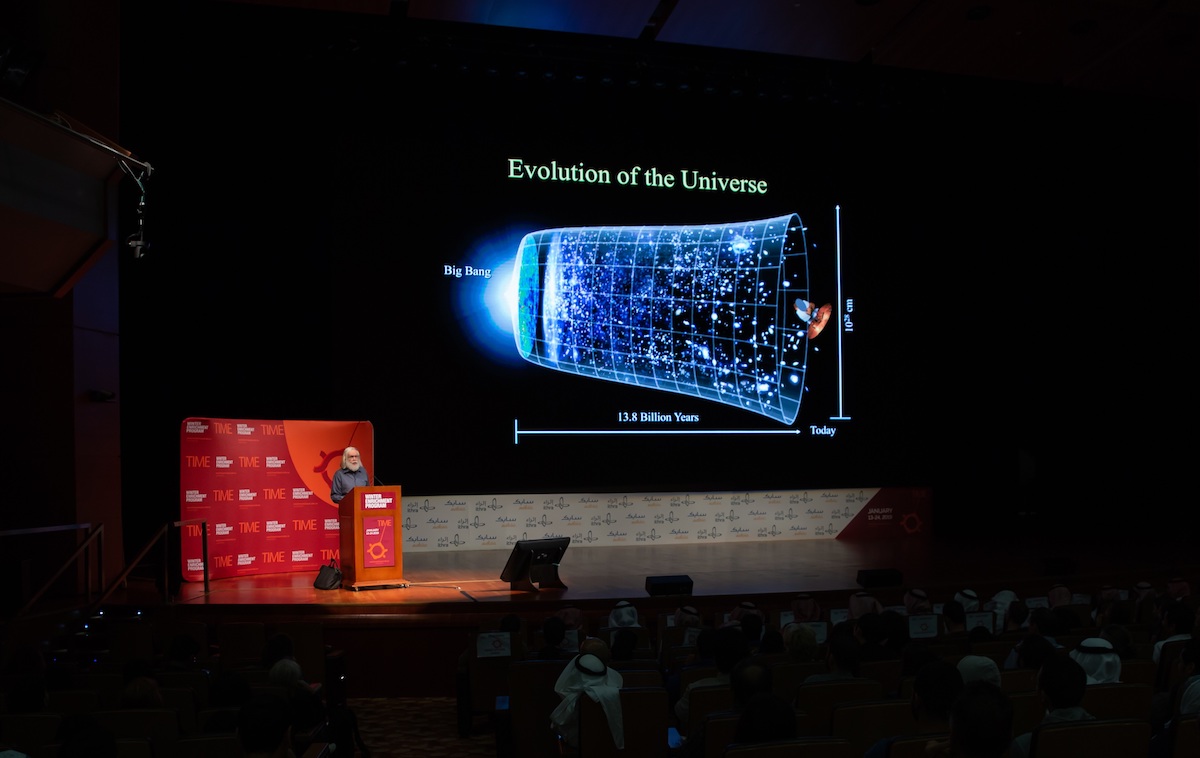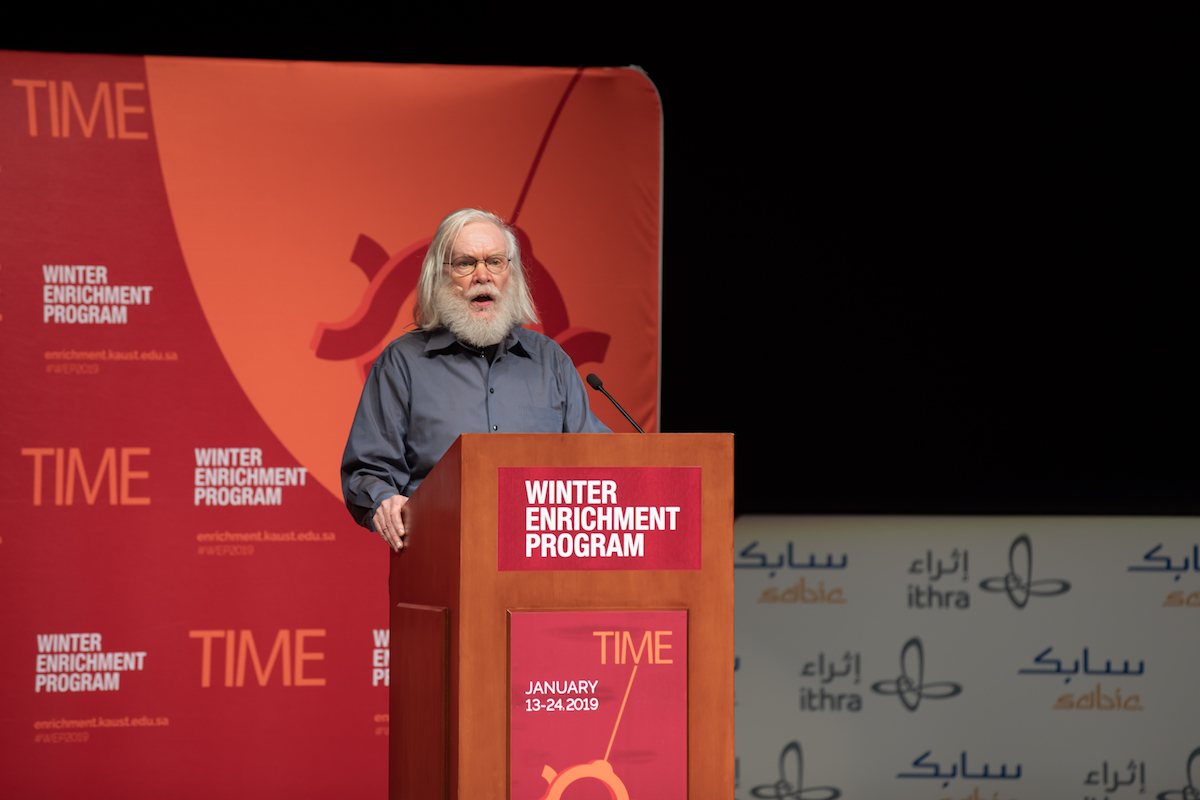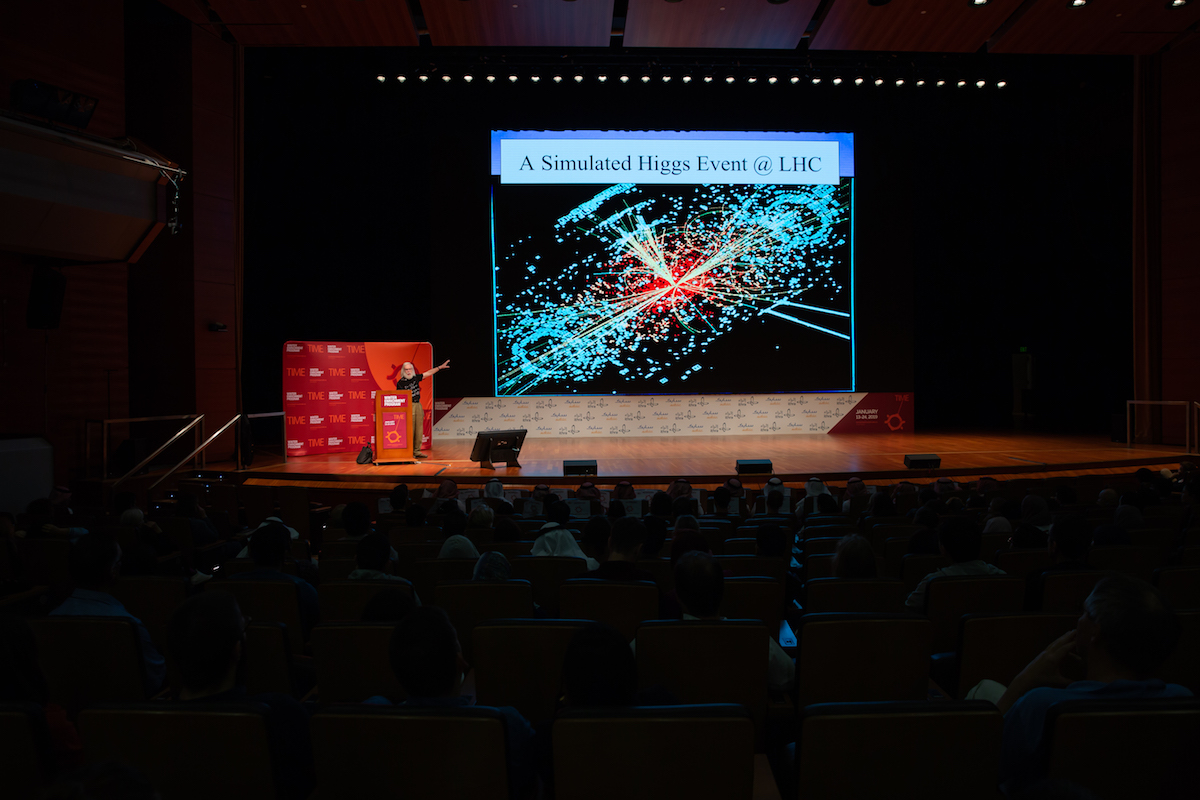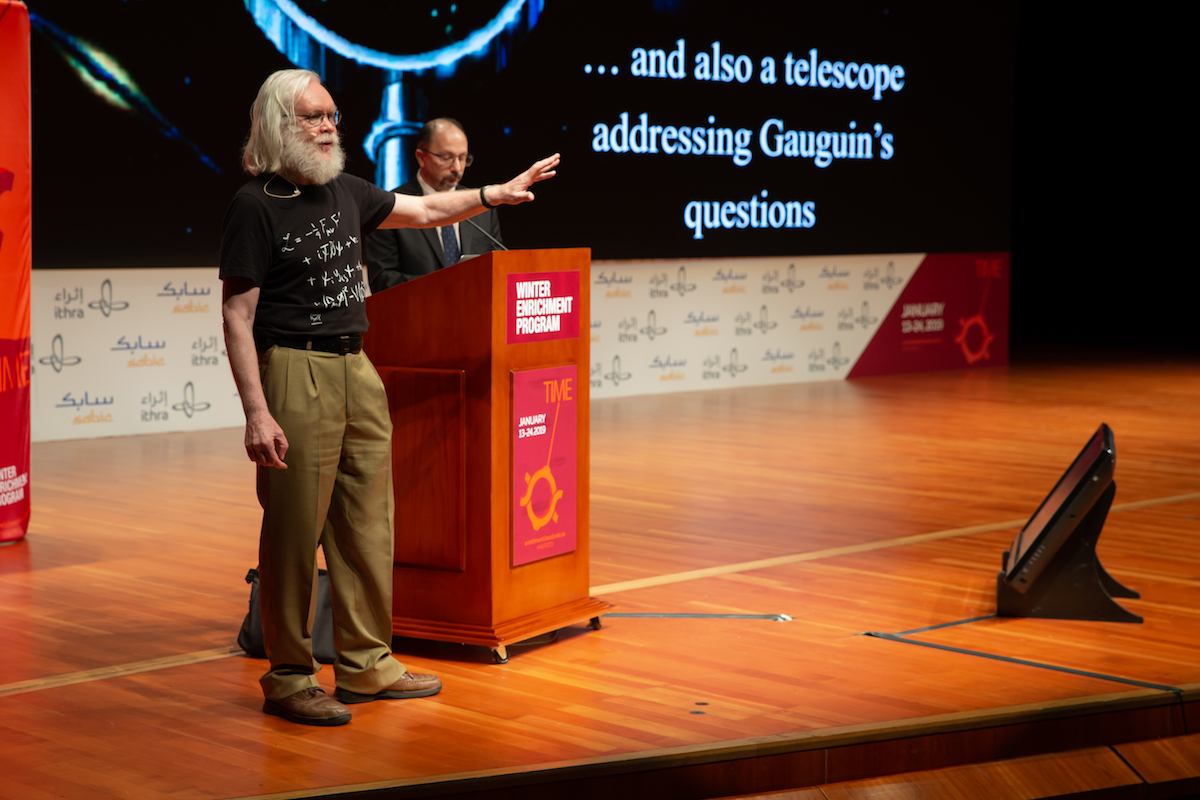How does the universe work?

John Ellis, the Clerk Maxwell professor of theoretical physics at King's College London, speaks on January 15 on campus as part of the University's 2019 Winter Enrichment Program. Photo by Sarah Munshi.
-By Tanya Petersen, KAUST News
One-hundred and twenty years ago, the French post-Impressionist artist Paul Gauguin produced the famous painting D'ou Venons Nous / Que Sommes Nous / Où Allons Nous. The painting asks some of life's key questions: "Where do we come from? What are we? Where are we going?"
As part of KAUST's 2019 Winter Enrichment Program (WEP), on January 15, John Ellis, the Clerk Maxwell professor of theoretical physics at King's College London, tried to answer these questions from a theoretical physics perspective. Ellis previously worked at Caltech in the U.S. and CERN in Geneva, where he was Theory Division leader for six years.
Ellis opened his keynote address by telling audience members they be reduced down to a single sentence: "How does the universe work!?"
To begin, where do we come from? Looking back to the big bang, physicists know that the universe is around 13.8 billion years old and is expanding. What they are still trying to determine is exactly what the universe is made of.

John Ellis, a professor of theoretical physics at King's College London, tries to answer the questions "Where do we come from? What are we? Where are we going?" during his 2019 Winter Enrichment Program lecture on campus. Photo by Sarah Munshi.
Until now, Ellis explained, physicists have worked with the Standard Model of particle physics.
"[This is] a theory of matter containing particles of matter—electrons, quarks, [and] for some reason that we don't really understand, there are two heavier particles like the electron and there are also neutrinos. Then, between these fundamental particles of matter, we distinguish four fundamental reactions. Gravity, electromagnetism, then inside the world of elementary particles, there is a strong nuclear force and a weak nuclear force responsible for forms of radioactivity," he said.
Ellis thinks of these particles and forces as constituting the cosmic DNA and that their properties encode all the information needed to make all of the visible matter in the universe. However, there is one thing missing.
"It doesn't tell you why, it tells you how," Ellis said. "There is no explanation of where particle masses come from—hence no explanation of how it is possible for atoms to form."

Professor John Ellis discusses the discovery of the Higgs boson during his 2019 Winter Enrichment Program lecture on campus on January 15. Photo by Sarah Munshi.
"Without the Higgs boson, there would be no atoms because massless electrons would run away from nuclei at the speed of light. There would be no heavy nuclei to start off with; the weak interactions responsible for radioactivity would be much stronger; we would all glow in the dark; and life would be impossible," he said.
Despite the discovery of the Higgs boson, there are multitudes of other questions without answers and, Ellis said, these will require physics beyond our current understanding. One principle called supersymmetry stabilizes empty space.

During his 2019 Winter Enrichment Program lecture on January 15, Professor John Ellis told the KAUST audience he hopes for more groundbreaking discoveries like the Higgs boson during his lifetime. Photo by Sarah Munshi.
Researchers at CERN are now studying the origin of mass, the nature of dark matter and the small differences that exist between matter and anti-matter to continue the quest to answer the question of how the universe works.
Many physicists think that there are new particles out there waiting to be discovered—the question is whether they are particles as fundamental or important as the Higgs boson or the electron or whether there are other particles that are even more fundamental.
There will likely always be more questions about the nature of the universe. This excites Ellis, and he hopes for more discoveries like the Higgs boson within his lifetime.
"We are just trying to read nature's instruction book," he noted. "Nature has been kind enough to give us lots of clues—all these galaxies, all these stars, all these phenomena in the universe, and we are lucky that we are able to do these experiments to—in some sense—recreate what happened during the big bang in the laboratory."
Related stories:
- Our biological clocks
- The forgotten half of the brain
- Understanding networked systems
-
What drives us and what powers us

